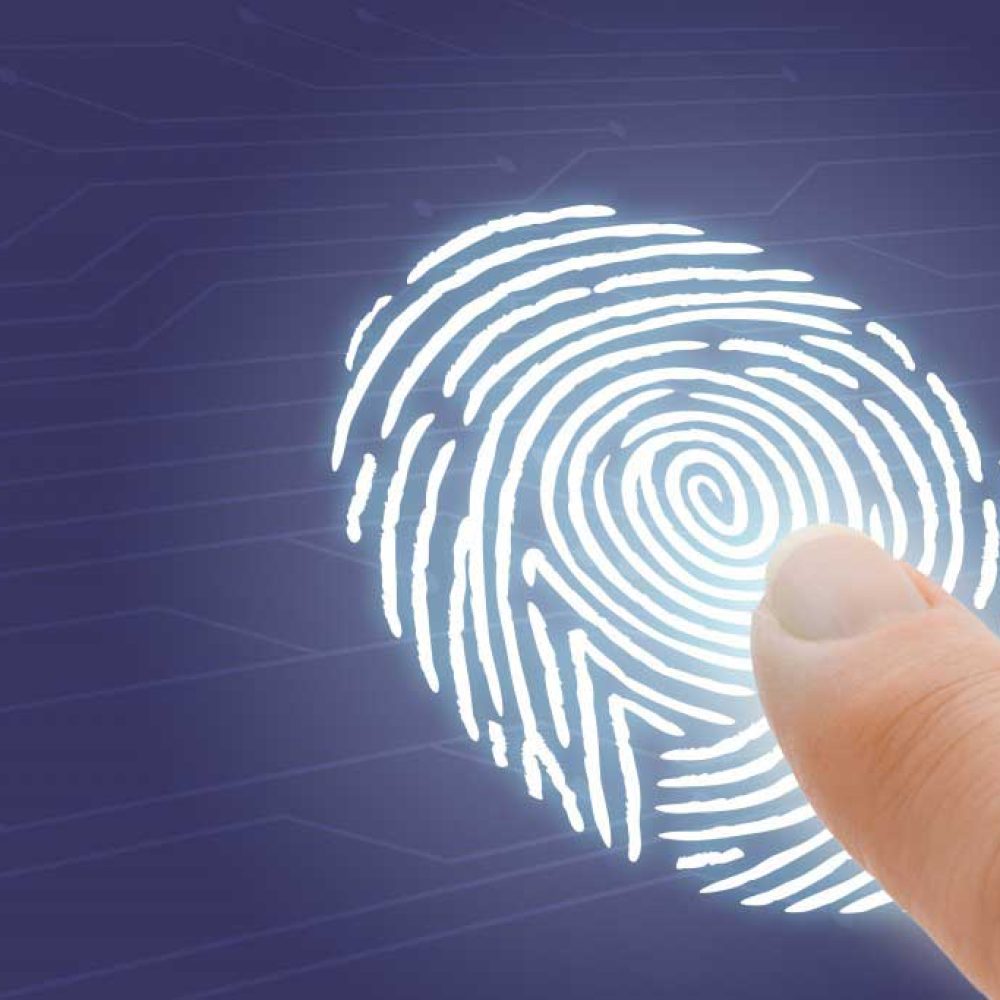Service
DMIT ( Dermatoglyphics Multiple Intelligence Test)
We understand the whole world through our brains but do we actually know our Brains?
DMIT helps us to know our Brain.


What Is DMIT?
- DMIT is the scientific study of ridged skin patterns found on fingers, palms, toes, and soles.
- These patterns are formed during the fetal development stage at 13 to 21 weeks. The human brain is also developed during this stage
- After more than 200 yrs of scientific research it is proven fact that there are no two identical fingerprints, patterns remain the same during lifetime and even after the complete decomposition of the body takes place
- Fingerprints are the product of your genes as well as the environment of the womb during development in the first trimester (nutrition, blood pressure, contact with the womb)
The History of DMIT
DMIT is a study of fingerprints and their patterns done by scientists and medical experts over 400 years that tell us the connection between our fingerprints and the brain.
- 1684 – Dr. Nehemiah Grew (1641-1712) first presented the Finger Prints, Palms and Souls an Introduction To Dermatoglyphics to the Royal Society.
- 1685 – Bidloo published an anatomical atlas, Anatomia Humani Corporis, with illustrations showing the human figure both in living attitudes and as dissected cadavers.
- 1686 – Dr. Marcello Malphigi (1628-1694) noted his treatise, ridges, spirals, and loops in fingerprints.
- 1788 – C. Mayer was the first to write out basic tenets of fingerprint analysis and theorized that fingerprints were unique.
- 1823 – Joannes Evangelista Purkinji, a physicist and biologist, studied the skin of the human palms and soles and attempted to systemize and also find a relationship between these fingerprints and humankind. He found that the patterns on one’s fingertips and the ridges and lines on one’s prints begin to form around the thirteenth week in the womb.
- 1823 – Dr. Jan Purkinje successfully classified the papillary lines on fingertips into nine types: arch, tented arch, ulna loop, radial loop, peacock’s eye/compound, spiral whorl, elliptical whorl, circular whorl, and double loop/composite.
- 1832 – Dr. Charles Bell (1774-1842) was one of the first physicians to combine the scientific study of neuroanatomy with clinical practice. He published The Hand: Its Mechanism and Vital Endowments as Evincing Design.
- 1880 – Articles written by Professor Henry Faulds and Professor WJ Herschel were published in The Nature journal. These articles recommended the use of fingerprints/Dermatoglyphics as a means to uniquely identify and differentiate mankind.
- 1893 – British anthropologist and cousin of Charles Darwin, Dr. Francis Galton published his book, “Fingerprints”, establishing the individuality and permanence of fingerprints. The book included the first classification system for fingerprints: Arch, Loop, and Whorl.
- 1897 – Harris Hawthorne Wilder was the first American to study Dermatoglyphics. He invented the Main Line Index and studied thinner hypothenar eminencies, zones II, III, and IV.
- 1920 – Elizabeth Wilson, a Columbia University Professor stated the scientific method, research, and application of the statistical methods.
- 1926 – The Father of Dermatoglyphics, Dr. Harold Cummins, M. D and Dr. C. Midlo, M. D together studied all the aspects of fingerprint analysis, from anthropology to genetics and the embryology aspect. In the year 1943, he published the book, Finger Prints, Palms and Soles, which is regarded as the bible in the field of Dermatoglyphics. Thereafter, Dermatoglyphics officially became an area of research and knowledge.
- 1936 – Dr. Harold Cummins and Dr. Charles Midlo partnered up to research the embryo-genesis of skin ridge patterns and concluded that fingerprint patterns actually develop in the womb and are fully formed by the fourth month of the fetal stage.
- 1944 – The Psycho-Analytic Chirologist, Dr. Julius Spier published his book – The Hands of Children where he made several significant discoveries, especially in the area of psycho-sexual development and the diagnosis of imbalances and problems in this area from the patterns on the hands.
- 1950 – Canada’s famous brain surgery professor Banfill (Penfield) published – The Body of all parts of the brain, wherein he also associated the cross-section map, also referred to as finger dermatoglyphics, and close of the association between the brain.
- 1957 – Dr. Walker used the dermal configurations in the diagnosis of mongolism
- 1968 – Sarah Holt in her own piece of work, The Genetics of Dermal Ridges’, a book published in 1968 neatly summarizes her research in the field of dermatoglyphics and the patterns of both the fingers and palm in various people, both normal and congenitally afflicted.
- 1969 – John J. Mulvihill, MD and David W. Smith, MD published The Genesis of Dermatoglyphics which provides the most up-to-date version of how fingerprints form.
- 1970 – USSR, Former Soviet Union. Using Dermatoglyphics in selecting the contestant for the Olympics. As it turned out, the USSR took home 50 gold medals in 1972 and 125 in 1976.
- 1976 – Schaumann and Alter’s ‘Dermatoglyphics in Medical Disorders’ published. Significant investigations have also been carried out into the dermatoglyphic indicators of congenital heart disease, leukemia, cancer, rubella embryopathy, Alzheimer’s disease, schizophrenia, etc. Dermatoglyphics research is being directed into genetic research and the diagnosis of chromosomal defects.
- 1980 – The Chinese carry out research work on human potential, intelligence, and talents in dermatoglyphics and human genome perspective
- 1981 – Professor Roger W Sperry and his research partners were awarded Nobel Prize for Biology for their contribution to the functions of the right brain and left brain as well as the dual brain theory. The research related to the brain then entered its peak at this stage, which is now widely used by scientists from many other fields.
- 1985 – Dr. Chen Yi Mou, Ph.D. From Harvard University first applied the research on Dermatoglyphics Intelligence Theory by Dr. Howard Gardner. He applied it in the educational and brain physiology fields.
- 1986 – Nobel Prize in physiology was awarded to Dr. Rita Levi-Montalcini & Dr. Stanley Cohen for discovering the correlation between NGF (Nerve Growth Factor) and EGF (Epidermal Growth Factor).
- 2000 – Dr. Stowens, Chief of Pathology at St Luke’s hospital in New York, was first able to diagnose schizophrenia and leukemia with up to a 90% accuracy. In Germany, Dr. Alexander Rodewald reports he can pinpoint many congenital abnormalities with 90% accuracy.
- 2004 – IBMBS- International Behavioral & Medical Biometrics Society published over 7000 reports on DMIT. Nowadays developed countries like the U.S.A, Russia, Japan, China, Taiwan, and many more applies DMIT to educational fields, expecting to improve teaching qualities and raise learning efficiency by knowing various learning styles.
Currently, DMIT has been an evolved field of research and application. Such that the diagnosis of some of the illnesses can now be done on the basis of DMIT analysis alone. Several DMIT researchers have claimed that they have a high degree of accuracy in their prognostic ability from the hand features.
Why DMIT?


What is inside DMIT REPORT?
As per Dr. William Morston’s theory, there are 4 types of personality. This theory is also known as DISC theory. Also, every individual is having a dual personality. Primary Personality is one we show with our normal behavior and secondary personality comes into play while taking any decision or having any unpleasant situation.
The brain is one of the most intricate organs in the human body. With over 100 million neurons and 100 trillion connections, it functions as fuel and drives you forward. It is divided into two halves, and each half controls certain functionalities. Both may look the same, but there is a vast difference in their processes, and they keep evolving with your experience and knowledge.
There are about 100 billion neurons in the human brain. Information travels between neurons at high speed and the slowest speed is 260 mph or 416 km. ATD degrees reflect the brain and muscle coordination, and ability in conveying and transmitting information. In other words, the information or sensation that students perceive through their senses (sight, touch, smell, hearing, and taste), how long it takes that information to reach the brain, and how quickly the brain responds to such stimulations.
- Linguistic= Word smart
- Logical-mathematical= Reasoning/Number smart
- Spatial= Picture smart
- Bodily-Kinesthetic= Body smart
- Musical= Music smart
- Interpersonal= People smart
- Intrapersonal= Self smart
- Naturalist= Nature smart
Awareness regarding different types of quotients helps the kids develop their personality as a whole. Most of us are aware only of IQ (Intelligence Quotient) but developing other quotients is equally important to grow in life.
VISUAL LEARNER
Prefer to use graphics, pictures, flow charts, graphs, etc. to learn.
AUDITORY LEARNER
Prefer to use listening and discussion to learn.
KINESTHETIC LEARNER
Prefer to use physical hands-on and practical Activities to learn.
SELF-COGNITIVE (Learn by self- Inspiration. You are goal-oriented & self-demanding)
With the knowledge of your child’s inborn talents and interests, you can help them or choose subjects in school that are suitable to their talents. They can then focus on their strength and it will help them excel at those and find their choice of career.
Advantages of DMIT
According to DMIT studies, each person has a unique personality and specific learning patterns. DMIT analysis helps to understand the potential of an individual and thus helps in selecting the right path, subject, stream, and career to move ahead and achieve success.
BENEFITS FOR CHILDREN
- Identify the best learning style and characteristics
- Identify inborn talents and areas of improvements
- Tailor-made for a child’s own learning program
- Effective use of Time & Energy
- It saves a lot of Money
- Build up the child’s confidence and see them Grow
- Improve relationship with parents
BENEFITS FOR INDIVIDUALS
- Understanding yourself, choosing the right career
- Identify and harness your core competency
- Identify your best learning and leadership style
- Ignite your passion for living
- Self Empowerment
- Invest yourself smartly for personal development
- Identify your EQ, IQ, AQ, and CQ distribution
BENEFITS FOR CORPORATES
- Place the right talent in the right position
- Ensure pre-employment screening
- Empower your staff by knowing their talents
- Discover the hidden value of staff and help them grow
- Organize your workforce for peak performance
- Evaluate your management-level talent profile
- Create your ALL-STAR team
BENEFITS FOR FAMILIES
- Improve relationships by knowing each other’s SWOT
- Create Beautiful Bonding among all members of the family
- Effective use of each other’s Strengths
- Cover up each other’s weaknesses and help to improve
- Create a healthy and loving environment at your home
- Together Families can achieve their Vision & Dreams
- Make a Happy & Joyful Family
SCOPE OF DMIT COUNSELLING IN VARIOUS FIELDS
The DMIT counseling test can help identify individuals’ comfort zones. There are different types of DMIT counseling-
Behavior Counselling
DMIT counselling determines the causes of individual behaviour and therefore DMIT is a great way for behavioural counselling.
Academic Counseling
Every child is different and therefore through DMIT Counselling counselors can tailor their learning programs. Thus DMIT counseling will help in achieving academic excellence.
Couple / Relationship Counselling
Today we find that life in metro cities is very different and challenging, with the growing differences between couples increasing the demand for counselors. Therefore DMIT counseling is a great method to understand each other scientifically and to go beyond differences.
